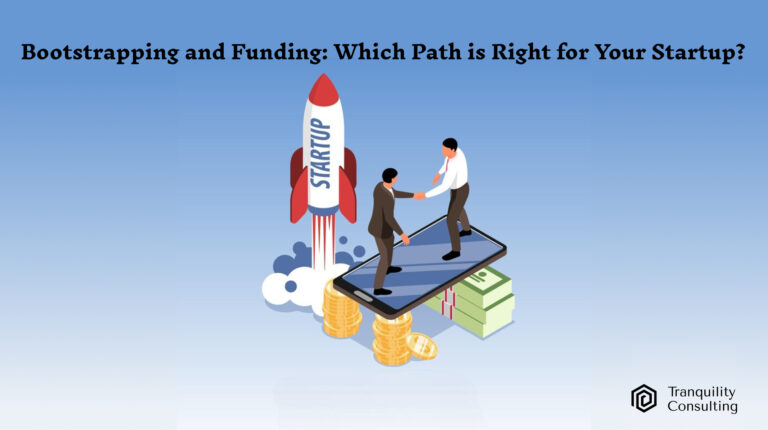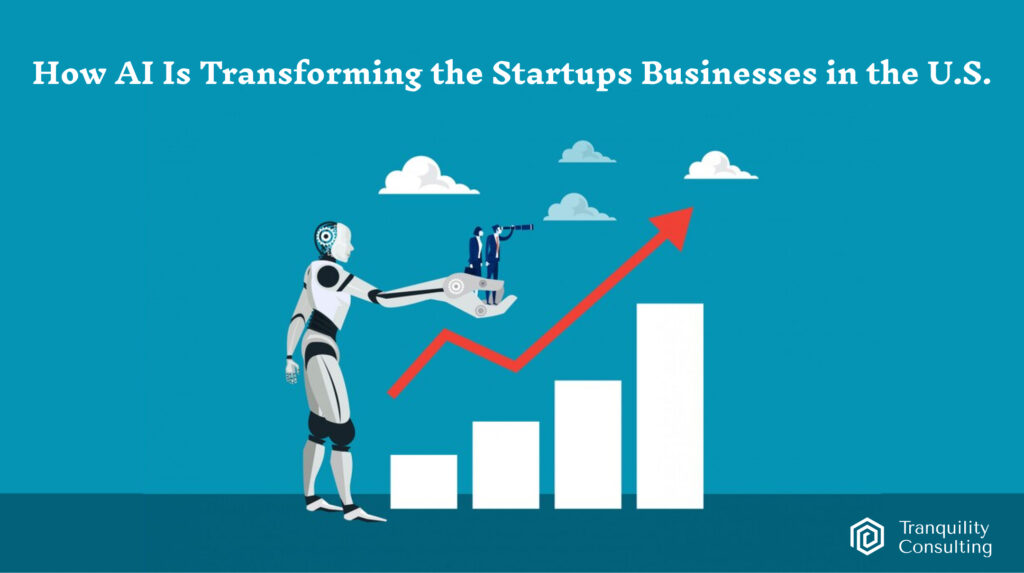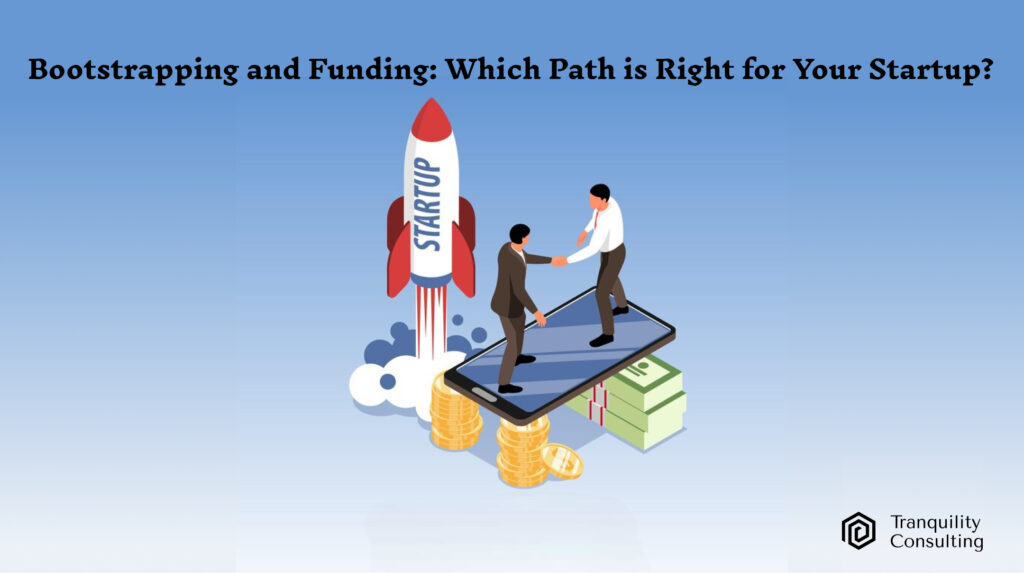Launching a startup is a thrilling journey, filled with important decisions that shape the future of your business. One of the most significant decisions is choosing how to finance your venture. Should you bootstrap, relying on your resources, or seek funding from investors? This decision can affect your startup’s growth, control, and sustainability. This blog will explore the pros and cons of bootstrapping and funding to help you determine the best path for your business.
What is Bootstrapping?
Bootstrapping refers to starting and growing a business with personal savings or internal cash flow. Instead of seeking external investments, bootstrappers rely on their financial resources, revenues, and frugal strategies to build their startup. Many successful companies, such as Mailchimp and Basecamp, began as bootstrapped startups and thrived without outside funding.
Pros of Bootstrapping
- Complete Control: Bootstrapping allows founders to retain full control over their business. You decide the direction, vision, and strategy without answering to investors or giving up equity.
- Focused Growth: Without the pressure of satisfying investors, you can focus on sustainable and organic growth. This method encourages founders to create a solid, self-sufficient business model.
- Financial Discipline: Relying on limited resources fosters a culture of financial discipline. This helps reduce waste and focus on the business’s crucial needs.
- Ownership: Since there are no investors, you keep all the profits. If your startup succeeds, this can lead to higher rewards in the long term.
Cons of Bootstrapping
- Limited Resources: The most significant disadvantage of bootstrapping is limited capital. This can restrict your ability to scale quickly, hire top talent, or invest in marketing.
- Slower Growth: Growth may be slower than funded startups, as you must carefully manage expenses and need more financial cushion to take risks.
- High Personal Risk: If your startup fails, using your savings or taking personal loans can be risky. This puts pressure on founders to succeed with limited resources.
What is Funding?
Funding involves raising capital from external sources such as venture capitalists (VCs), angel investors, or crowdfunding platforms. In exchange, you may need to give up a portion of equity or take on debt. Companies like Uber and Airbnb raised millions in funding, enabling them to scale rapidly and become industry giants.
Pros of Funding
- Access to Capital: Funding provides a significant influx of cash, allowing startups to invest in product development, marketing, and scaling efforts. This accelerates growth and gives you a competitive edge.
- Networking Opportunities: Investors often bring valuable industry connections, mentorship, and guidance that can help your startup navigate challenges.
- Reduced Personal Financial Risk: Unlike bootstrapping, funding reduces the financial burden on founders. You can focus on building the business without draining personal savings.
- Faster Scaling: With ample funds, startups can hire top talent, enter new markets, and build brand awareness quickly.
Cons of Funding
- Loss of Control: Taking funding often means giving up a portion of equity. Investors may have a say in major decisions, which can lead to conflicts over the startup’s direction.
- Pressure for Quick Returns: Investors expect returns within a set timeframe. This can lead to pressure to grow rapidly, potentially sacrificing long-term stability.
- Diluted Ownership: Your ownership share decreases as you attract more investors, which can reduce your influence over the business as it scales.
- Investor Dependence: Relying on investors may lead to a dependency that affects decision-making. The need to keep investors happy can sometimes steer the business away from its original vision.
Comparing Bootstrapping vs. Funding
| Feature | Bootstrapping | Funding |
| Control | Complete control, no external input | Investors may influence decisions |
| Speed of Growth | Slower, steady growth | Rapid scaling and expansion |
| Financial Risk | High personal risk | Lower personal risk, shared with investors |
| Equity | Retain 100% ownership | Equity dilution for capital |
| Decision-Making Freedom | Greater freedom in decisions | Restricted, with investor expectations |
When Should You Bootstrap?
Bootstrapping is ideal if:
- You want to maintain complete control over your startup.
- Your business model can generate early cash flow.
- You prefer to grow at a steady, manageable pace.
- You have a solid financial plan and a budget-friendly strategy.
- You’re in a niche market that doesn’t require aggressive scaling.
Bootstrapping Success Tips
- Start Small: Focus on a Minimum Viable Product (MVP) to test your idea and build traction without overspending.
- Prioritize Revenue Generation: Concentrate on activities that drive revenue and avoid unnecessary expenses.
- Use Free Tools and Resources: Use free or low-cost tools to manage and promote your business.
- Network for Support: Join local entrepreneur groups, online communities, and forums for guidance and resources.
Conclusion
Choosing between bootstrapping and funding depends on your business goals, industry, risk tolerance, and long-term vision. Bootstrapping offers control and self-reliance, while funding provides rapid growth and resource access. Assess your startup’s needs, market conditions, and personal preferences to make an informed decision. Remember, there is no one-size-fits-all answer. Each startup is unique, and what works for one might not work for another. Weigh the pros and cons carefully, and choose the best path with your goals.





